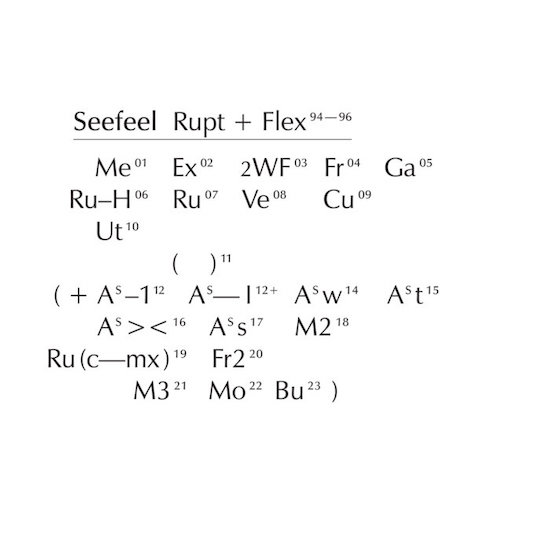“We took a lot of flak when we joined Warp, just for the fact that we used guitars,” Mark Clifford tells Jeanette Leech in her book Fearless – The Making Of Post Rock. Inspired by Cocteau Twins, My Bloody Valentine, and Sonic Youth, but also dub, Seefeel had been one of the first UK groups to earn the term ‘post-rock’ minted in 1994 by journalist Simon Reynolds. The common thread Reynolds found connecting groups as disparate as Bark Pyschosis, Pram, Scorn, Main, Laika, Insides and Seefeel was that they were "using rock instrumentation for non-rock purposes, using guitars as facilitators of textures and timbres rather than riffs and powerchords." The corollary to this was, to varying degrees, the integration of samplers and approaches drawn from techno, hip hop, and dub. On this site, Ben Cardew also placed them in an electronic shoegaze micro-bracket together with Chapterhouse (as remixed by Global Communication) and Slowdive’s Souvlaki.
Seefeel, along with Laika, were perhaps the most successful at folding newer technology into their sound, never treating it as just a bolt-on to a more trad indie or shoegaze composition. But in Seefeel’s case, even more recently accessible technology eventually pushed out almost any trace of recognisably ‘live’ playing – not an issue in terms of the quality of the work that resulted, but the trajectory makes the music collected on Rupt & Flex bracingly different from that on their 1993 Too Pure debut, Quique.
The combination of aqueous drones, wispy vocal hooks, and meaty rhythms combine to give Quique a euphoric, near-Balearic glow. Any band feel is already receding into the distance. Singer and self-described "rubbish guitarist, technically" Sarah Peacock had been the spur for the formation of Seefeel (which went on to comprise Peacock, Clifford, Justin Fletcher and Daren Seymour on bass after the departure of Mark Van Hoen), having placed an advert looking for musicians to play in a band influenced by My Bloody Valentine and Sonic Youth. Her retreat within the recordings was partly due to an assessment of her own strengths and weaknesses (unhappy with her lyrics, she wrote fewer and fewer words and found herself singing in an increasingly "vague and hazy" way, avoiding the letter s because of a lisp) but sometimes also imposed on her – the only track on Quique which would have featured her guitar was pulled by the other band members at the last minute. Anyone in a flap about a ‘guitar’ band signing to Warp – several years before the label brought the more indie-ish Broadcast on board, let alone Maxïmo Park – had nothing to worry about.
Rupt & Flex collates the band’s recordings from ’94 to ’96: two brilliant EPs (Starethrough and Fractured/Tied), their second and third albums Succour and (Ch-Vox) (the latter released on Aphex Twin’s Rephlex imprint) and a host of rarities and unreleased tracks, including an Autechre remix of ‘Spangle’. It’s not their full Warp history, since they returned in 2010 with an excellent, eponymous album, but it marks the point where Clifford in particular became both absorbed by the possibilities offered by digital tools and, in the time-honoured tradition of the production obsessive, disenchanted with touring and promotional duties.
Succour and its associated bonus tracks, remastered by Pole (Stephen Betke), are full of chest cavity-probing bass and gleaming, metallic percussion – especially striking on the likes of ‘When Face Was Face’ and the imperious ‘Vex’ – highly sculpted, digitally buffed textures from indeterminate sources (occasionally a guitar is recognisable), and Peacock’s by-then almost evaporating vocals. And there are constants from the Quique era, such as the Aphex-like drones and the dub chassis that so much of their work rests on.
(Ch-Vox), made up of off-cuts from the Succour sessions, starts up with a longer version of the latter’s final piece ‘Utreat’, seemingly built around bass harmonics from Seymour. The album is even more eerily paired down, except for the skittering ‘Hive’, and comes with its own bonus material; the outtakes of the outtakes but rewarding nonetheless – just check out the lattice of loops and vocal cut-ups (I think) that make up ‘Evio’. The four-CD set finishes with a couple of ‘extended live versions’ of ‘Spangle’ and ‘Gatha’, neither of which sound especially ‘live’ either. Like much of the music on Rupt & Flex they’re beautifully precise structures, haunted by faint echoes of human effort.


